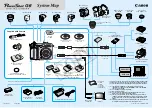
Cheetah Pregius Camera with 10 GigE Vision Interface – User Manual
October 8, 2020
Page
136
of
170
Rev 1.0
Area of Interest
For some applications, you might not need the entire image, but only a portion of it. To
accommodate this requirement, the Cheetah camera allows you to create one Region of Interest
(ROI), also known as an Area of Interest (AOI).
Horizontal and Vertical Window
Set the starting and ending point for each AOI independently in the horizontal direction
(Horizontal Window) and the vertical direction (Vertical Window) by setting the window (H & V)
offset and (H & V) size. The horizontal dimension is limited to multiples of 32 pixels, and the
vertical dimension is limited to multiples of 4 pixels. In normal operation, the AOI defines the
number of columns and rows output. The maximum horizontal window size (H) and the vertical
window size (V) are determined by the camera’s image full resolution.
For color cameras with AOI enabled, use an even number for Offset X and
Offset Y to achieve proper color reconstruction and white balance.
Factors Impacting Frame Rate
The camera frame rate depends upon a number of variables including the exposure time,
number of rows and columns in the AOI, and the bandwidth of the output interface.
AOI size:
Camera frame rate increases by decreasing either the number of columns or number of
rows read out. Changing the number of rows read out causes the largest change in frame rate.
Exposure Time:
In free-running or Fast trigger mode, the camera overlaps the exposure time and
image readout so frame rate has no dependence on exposure time. In Standard trigger mode,
however, the exposure and readout time do not overlap, and long exposure times will decrease
frame rate.
Line time:
This is the time required to read out one line from CMOS sensor. Increasing the line
time decreases the camera frame rate and extends exposure time. Please note that the extended
line time decreases bandwidth usage.
Decimation:
The camera supports both binning and sub-sampling decimation to reduce the
output resolution. Binning and sub-sampling increase the sensor frame rate. However, sub-
sampling offers the largest frame rate improvement by reducing the number of rows and
columns read out from the image sensor. Binning and sub-sampling provide about a 2x to 3x
increase in frame rate.
















































